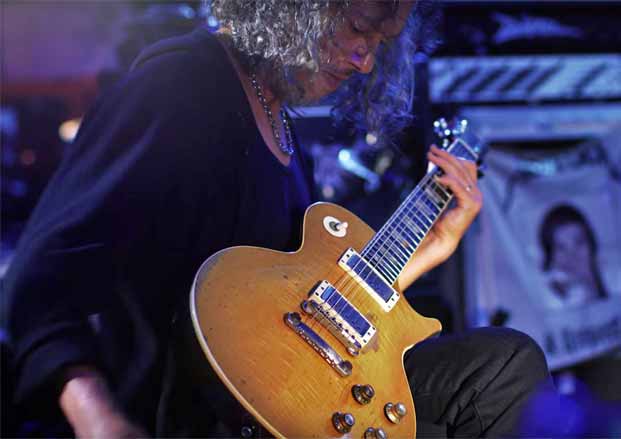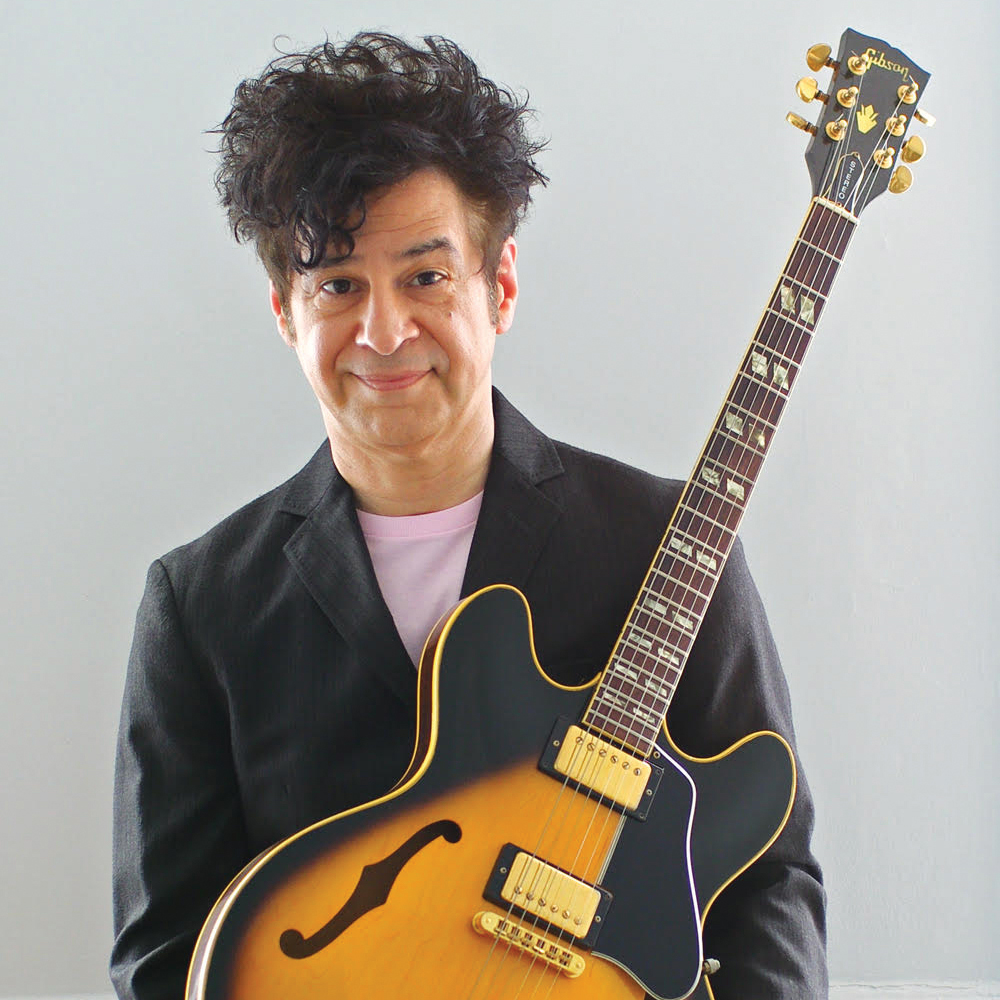Kirk Hammett: Five Things We Learned from His Ernie Ball ‘String Theory’ Clip

Metallica guitarist Kirk Hammett appears in a recent episode of Ernie Ball’s acclaimed String Theory series to talk about his love of guitar, influences and choice of strings and gauges.
For much of the video, Hammett play his 1959 Gibson Les Paul, formerly owned by Peter Green and Gary Moore, providing an opportunity to hear the guitar on its own. He also talks about Ernie Ball strings and how he chose them over other brands, and reveals his string gauges. The clip ends with him giving his ESP KH-2 Boris Karloff Mummy guitar a workout, with a wah of course.
If you’ve seen other String Theory episodes, you’ll know they offer great insights into the minds of guitar players. Some previously featured guitarists include Tool’s Justin Chancellor, Joe Bonamassa, Paul Gilbert and Kenny Wayne Shepherd, among others.
Below, we’ve called out five things we learned from Hammett’s String Theory episode. But be sure to watch the entire video, shown at bottom, for more insights and to hear plenty of his shredding.
To see Ernie Ball’s other String Theory videos, plus clips from its equally excellent Pursuit of Tone series and much more, visit the company’s YouTube channel.
1. Playing guitar helps him deal with stress. (1:12)
“If I’m bummed out, I’ll go to my guitar,” Hammett says. “A lot of times when I’m, like, really stressed out or I’m dealing with anxiety, I’ll just play until I just calm down. When I have this feeling inside that needs to get out, guitar helps that feeling. It’s a creative tool, but on the other hand it’s also a rehabilitative, emotional, spiritual tool that I use as well to feed my inner self.”
2. Hearing Kiss in seventh grade transformed him. (2:15)
“When I was in seventh grade, a friend came over and he said, ‘Look at this band! Look how cool they are!’ And he showed me the album cover, and I was looking at it and I thought, Wow, what a strange-looking band. ‘What are they called?’ And my friend said, ‘Kiss!’
Get The Pick Newsletter
All the latest guitar news, interviews, lessons, reviews, deals and more, direct to your inbox!
“So we put the album on, and all of a sudden, it was exactly what I wanted to hear.”
3. Jimi Hendrix was the first guitar player to have an impact on him. (3:05)
“I think I was about 13 or 14 years old when I saw the [1973] documentary called A Film About Jimi Hendrix. It’s the one where he’s sitting on a stool playing a 12-string guitar.“When I saw Hendrix up on the screen, I was just blown away because I was seeing a complete package. I was seeing a guy who could play guitar amazingly, who looked so different and so unique. It was everything that I wanted to be.”
4. Hearing Michael Schenker transformed his attitude about guitar playing. (4:12)
“When I first heard UFO and heard Michael Schenker, my whole attitude changed,” Hammett says. “And to this day, Michael Schenker and Jimi Hendrix are some of my main influences.”
5. Hammett mixes two Ernie Ball string sets to achieve his ideal string gauges. (5:32)
“The three top strings are from a .010 set, and then the bottom three strings are from a .048 set,” he explains. “And the reason for that is, as a lead guitar player, I need to be able to bend the light strings, and if I have .011s on, I notice that over the course of a tour my hand gets fatigued. But if I go to .010s, it’s okay over the course of a tour.“It’s so bizarre. And it only took me, like, 10 years to realize that.”
Christopher Scapelliti is editor-in-chief of Guitar Player magazine, the world’s longest-running guitar magazine, founded in 1967. In his extensive career, he has authored in-depth interviews with such guitarists as Pete Townshend, Slash, Billy Corgan, Jack White, Elvis Costello and Todd Rundgren, and audio professionals including Beatles engineers Geoff Emerick and Ken Scott. He is the co-author of Guitar Aficionado: The Collections: The Most Famous, Rare, and Valuable Guitars in the World, a founding editor of Guitar Aficionado magazine, and a former editor with Guitar World, Guitar for the Practicing Musician and Maximum Guitar. Apart from guitars, he maintains a collection of more than 30 vintage analog synthesizers.
“I suppose I felt that I deserved it for the amount of seriousness that I’d put into it. My head was huge!” “Clapton is God” graffiti made him a guitar legend when he was barely 20 – he says he was far from uncomfortable with the adulation at the time
“I was in a frenzy about it being trapped and burnt up. I knew I'd never be able to replace it”: After being pulled from the wreckage of a car crash, John Sykes ran back to his burning vehicle to save his beloved '76 Les Paul











